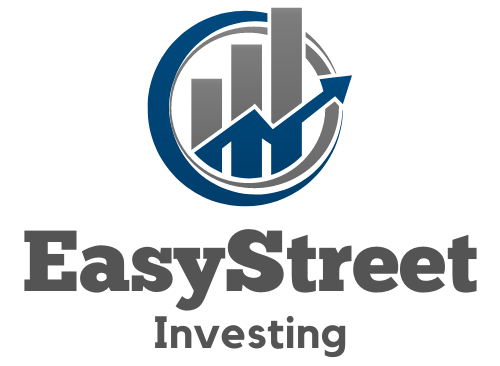For those eyeing a slice of the lucrative corporate bond market, understanding the ropes is crucial. You’re not just parking your money; you’re navigating a dynamic landscape where high returns beckon savvy investors. This article will be your compass, pointing out the essentials every investor should grasp about corporate bonds. Expect to uncover strategies to maximize gains, manage risks, and decode the jargon that often clouds the bond market’s true opportunities.
Let’s face it – we all want our investments to work as hard as we do. That’s why diving into the world of bonds can seem like striking gold, but there’s a catch: you’ve got to know what you’re doing. We’ll walk you through the ins and outs, from sifting through credit ratings to timing the market for optimal yield. You’ll get the lowdown on interest rate trends and how they play with bond prices, so you can make informed choices without feeling overwhelmed by financial gobbledygook. Stick around, and let’s demystify these potential profit-makers together.
Important Highlights
1. Understanding Risk and Rating Systems: Corporate bonds offer varied returns, so investors should closely scrutinize the creditworthiness of issuing companies. Ratings by agencies like Moody’s or Standard & Poor’s provide critical insights; however, higher yields often accompany higher risks, implying that bonds with stellar ratings may yield less than those from companies with uncertain financial health.
2. Diversification is Crucial: Investing in a mix of corporate bonds can shield you from unexpected market shifts. This approach spreads potential risk across various sectors and credit qualities, preventing a single default from having an outsized impact on your portfolio.
3. Interest Rates Influence Bond Prices: Be aware that bond prices inversely correlate with interest rate movements. When rates climb, existing bonds with lower rates lose appeal and their prices drop. Conversely, when rates fall, the value of these bonds rises. Keeping a pulse on the Federal Reserve’s policy changes can help anticipate such fluctuations.
4. Liquidity Matters: Consider the trade-off between higher returns and ease of selling your corporate bonds before maturity. More liquid bonds might offer slightly lower returns but allow for quicker access to your money without significant loss in value if you need to sell fast.
5. Tax Implications Vary: The interest earned on corporate bonds is generally subject to federal and state taxes, unlike municipal bond interest which may be tax-exempt. Consult a tax professional or reference resources from the IRS to understand how investing in corporate bonds will affect your tax obligations, as this will influence the net return on your investment.
Understanding Corporate Bonds and High Returns
Corporate bonds represent a loan from the investor to a corporation. They typically offer higher yields compared to government bonds, reflecting the increased risk. A bond’s yield is a measure of the return investors can expect. To maximize returns, assess the creditworthiness of issuing companies through their credit ratings—investment-grade bonds have lower risk but potentially lower returns than high-yield (junk) bonds.
Evaluating Bond Maturities
The maturity date of a bond affects its yield and risk profile. Short-term bonds are less sensitive to interest rate changes, making them more stable, while long-term bonds usually offer higher yields to compensate for greater risks. Consider your investment horizon and risk tolerance when choosing bond maturities. Diversifying across different maturities can help navigate interest rate fluctuations effectively.
Risks Involved in Corporate Bond Investment
Investing in corporate bonds carries certain risks such as credit risk, liquidity risk, and interest rate risk. Credit risk involves the possibility of a company defaulting on its debt obligations. Liquidity risk refers to the ease with which you can sell the bond without impacting its price significantly. Interest rate risk is the potential for bond prices to decline as interest rates rise since existing bonds with lower rates become less attractive.
Interest Rates and Their Impact on Corporate Bonds
An understanding of interest rates is crucial for corporate bond investors. When interest rates rise, bond prices typically fall, and vice versa. This inverse relationship means that being aware of economic indicators and central bank policies can be critical for timing investments in corporate bonds to achieve high returns.
Credit Rating Agencies: A Resource for Investors
Credit rating agencies provide evaluations of a corporation’s financial strength and ability to pay off debt. Top agencies like Moody’s, Standard & Poor’s, and Fitch Ratings offer insights into bond quality that can guide investors toward securing high returns on their investments while managing risk exposure.
Bond Laddering as an Investment Strategy
A laddering strategy involves purchasing multiple bonds with varying maturities to spread out interest rate and reinvestment risks over time. As each rung on the ladder matures, it provides cash flow or an opportunity to reinvest at prevailing market rates. This strategy also allows for capitalizing on different market conditions over time.
Portfolio Diversification with Corporate Bonds
Diversifying your investment portfolio by including a mix of sectors, credit qualities, and maturities helps mitigate overall risk while striving for high returns. Balance your corporate bond holdings with other fixed-income securities and equities based on your financial goals and market outlook.
The Role of Bond Funds and ETFs
Bond funds and exchange-traded funds (ETFs) offer an accessible way to invest in a diversified portfolio of corporate bonds with professional management. These pooled investment vehicles can provide liquidity and simplify the investment process while maintaining potential for high returns.
Secondary Market Trading of Corporate Bonds
The secondary market provides an avenue for buying and selling existing corporate bonds before they mature. This market adds flexibility to your investment strategy by allowing you to respond quickly to changing economic conditions or personal needs without waiting for bond maturity.
Tax Considerations in Corporate Bond Investing
Be cognizant of the tax implications associated with corporate bond investments. While municipal bonds often offer tax-exempt interest income, corporate bond interest is typically subject to federal and possibly state taxes, affecting net returns.
Monitoring Economic Indicators for Timing Investments
Keep abreast of key economic indicators like inflation rates, GDP growth figures, unemployment data, and manufacturing indexes which directly influence the performance of corporate bonds. Timely analysis enables informed decisions that cater towards optimizing returns.
Tips for Successful Corporate Bond Investing
- Analyze current economic trends before committing capital to corporate bonds.
- Diligently review credit ratings but also conduct independent research on issuing corporations’ financial health.
- Determine your individual risk appetite; high yields often come with higher risks.
- Maintain diversity within your corporate bond investments across industries and credit spectrums.
- Leverage professional advice from financial advisors or consider investing through managed funds when unsure about direct investments.
- Stay vigilant regarding interest rate forecasts as they directly impact bond prices and yields.
- Incorporate a laddering approach if seeking steady income streams while minimizing reinvestment risks.
- Use secondary markets wisely as part of an active investment management strategy.
- Familiarize yourself with tax liabilities associated with bond earnings to understand net return scenarios accurately.
Frequently Asked Questions
What are corporate bonds?
Corporate bonds are loans investors give to companies in exchange for interest payments. They’re a way to get a piece of the company’s debt and earn returns over time.
How do corporate bonds offer high returns?
Companies with higher risk profiles often pay more interest to attract investors. These higher rates can lead to bigger returns compared to less risky bonds.
Are high-yield bonds the same as junk bonds?
Yes, they are. “Junk bond” is a casual term for high-yield bonds that carry a greater default risk but offer enticing returns as compensation.
What should I look at before investing in corporate bonds?
You should review the credit rating of the bond, the maturity date, interest rate, and the issuing company’s financial health before investing.
Is it safe to invest in corporate bonds?
No investment is entirely safe, but diversifying your portfolio with different grades of corporate bonds can help manage risk.
Can I lose money on corporate bonds?
If a company defaults or if interest rates rise sharply, you might face losses. It’s important to weigh these risks against the potential rewards.
How does inflation affect corporate bond returns?
Inflation can erode the purchasing power of fixed-interest payments from bonds, potentially reducing their attractiveness unless they offer higher yields.
Should I choose short-term or long-term corporate bonds?
This depends on your investment goals. Short-term bonds are less sensitive to interest rate changes, while long-term bonds usually offer higher yields.
How do I buy corporate bonds?
You can purchase them through brokerage accounts, bond funds, or directly from some issuing companies. Do your research or consult a financial advisor first.
What is diversification in the context of corporate bonds?
Diversification involves spreading your investments across various sectors and credit qualities to reduce overall risk in your bond portfolio.
Closing Insights on Corporate Bonds
Navigating the landscape of corporate bonds requires understanding both their potential rewards and inherent risks. While they can be an excellent source for boosting your portfolio’s yield, it’s crucial to assess each opportunity carefully. By paying attention to credit ratings, economic trends, and diversification strategies, you can position yourself better to benefit from what corporate bonds have to offer without being caught off-guard by market volatility. Remember that informed decisions are key when you’re aiming for high returns with these financial instruments.
In conclusion, whether you’re new to bond investing or looking to fine-tune your approach, staying informed and maintaining a balanced perspective will serve you well. Never hesitate to consult financial experts and continue learning as you journey towards achieving your investment goals with corporate bonds.

